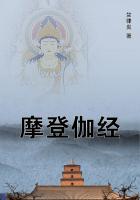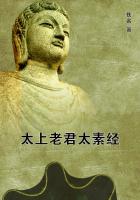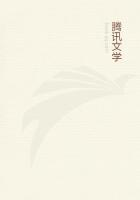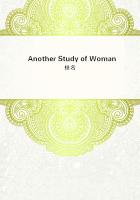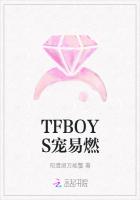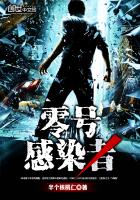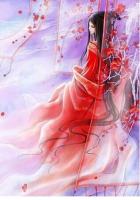The Light of Knowledge.
After what seemed an eternity to the little sufferer he was able to walk once more, and from then on his recovery was so rapid that in another month he was as strong and active as ever.
During his convalescence he had gone over in his mind many times the battle with the gorilla, and his first thought was to recover the wonderful little weapon which had transformed him from a hopelessly outclassed weakling to the superior of the mighty terror of the jungle.
Also, he was anxious to return to the cabin and continue his investigations of its wondrous contents.
So, early one morning, he set forth alone upon his quest.
After a little search he located the clean-picked bones of his late adversary, and close by, partly buried beneath the fallen leaves, he found the knife, now red with rust from its exposure to the dampness of the ground and from the dried blood of the gorilla.
He did not like the change in its former bright and gleaming surface; but it was still a formidable weapon, and one which he meant to use to advantage whenever the opportunity presented itself.He had in mind that no more would he run from the wanton attacks of old Tublat.
In another moment he was at the cabin, and after a short time had again thrown the latch and entered.His first concern was to learn the mechanism of the lock, and this he did by examining it closely while the door was open, so that he could learn precisely what caused it to hold the door, and by what means it released at his touch.
He found that he could close and lock the door from within, and this he did so that there would be no chance of his being molested while at his investigation.
He commenced a systematic search of the cabin; but his attention was soon riveted by the books which seemed to exert a strange and powerful influence over him, so that he could scarce attend to aught else for the lure of the wondrous puzzle which their purpose presented to him.
Among the other books were a primer, some child's readers, numerous picture books, and a great dictionary.All of these he examined, but the pictures caught his fancy most, though the strange little bugs which covered the pages where there were no pictures excited his wonder and deepest thought.
Squatting upon his haunches on the table top in the cabin his father had built--his smooth, brown, naked little body bent over the book which rested in his strong slender hands, and his great shock of long, black hair falling about his well-shaped head and bright, intelligent eyes--Tarzan of the apes, little primitive man, presented a picture filled, at once, with pathos and with promise--an allegorical figure of the primordial groping through the black night of ignorance toward the light of learning.
His little face was tense in study, for he had partially grasped, in a hazy, nebulous way, the rudiments of a thought which was destined to prove the key and the solution to the puzzling problem of the strange little bugs.
In his hands was a primer opened at a picture of a little ape similar to himself, but covered, except for hands and face, with strange, colored fur, for such he thought the jacket and trousers to be.Beneath the picture were three little bugs--BOY.
And now he had discovered in the text upon the page that these three were repeated many times in the same sequence.
Another fact he learned--that there were comparatively few individual bugs; but these were repeated many times, occasionally alone, but more often in company with others.
Slowly he turned the pages, scanning the pictures and the text for a repetition of the combination B-O-Y.Presently he found it beneath a picture of another little ape and a strange animal which went upon four legs like the jackal and resembled him not a little.Beneath this picture the bugs appeared as:
A BOY AND A DOG
There they were, the three little bugs which always accompanied the little ape.
And so he progressed very, very slowly, for it was a hard and laborious task which he had set himself without knowing it--a task which might seem to you or me impossible--learning to read without having the slightest knowledge of letters or written language, or the faintest idea that such things existed.
He did not accomplish it in a day, or in a week, or in a month, or in a year; but slowly, very slowly, he learned after he had grasped the possibilities which lay in those little bugs, so that by the time he was fifteen he knew the various combinations of letters which stood for every pictured figure in the little primer and in one or two of the picture books.
Of the meaning and use of the articles and conjunctions, verbs and adverbs and pronouns he had but the faintest conception.
One day when he was about twelve he found a number of lead pencils in a hitherto undiscovered drawer beneath the table, and in scratching upon the table top with one of them he was delighted to discover the black line it left behind it.
He worked so assiduously with this new toy that the table top was soon a mass of scrawly loops and irregular lines and his pencil-point worn down to the wood.Then he took another pencil, but this time he had a definite object in view.
He would attempt to reproduce some of the little bugs that scrambled over the pages of his books.
It was a difficult task, for he held the pencil as one would grasp the hilt of a dagger, which does not add greatly to ease in writing or to the legibility of the results.
But he persevered for months, at such times as he was able to come to the cabin, until at last by repeated experimenting he found a position in which to hold the pencil that best permitted him to guide and control it, so that at last he could roughly reproduce any of the little bugs.
Thus he made a beginning of writing.
Copying the bugs taught him another thing--their number;and though he could not count as we understand it, yet he had an idea of quantity, the base of his calculations being the number of fingers upon one of his hands.

